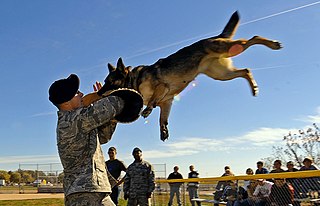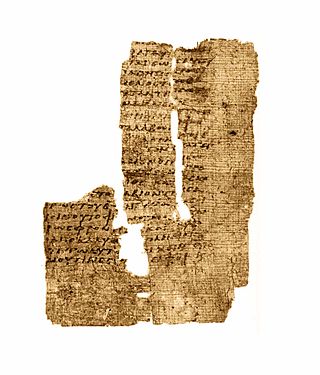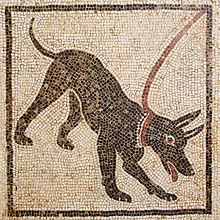
The Epistle to the Philippians is a Pauline epistle of the New Testament of the Christian Bible. The epistle is attributed to Paul the Apostle and Timothy is named with him as co-author or co-sender. The letter is addressed to the Christian church in Philippi. Paul, Timothy, Silas first visited Philippi in Greece (Macedonia) during Paul's second missionary journey from Antioch, which occurred between approximately 50 and 52 AD. In the account of his visit in the Acts of the Apostles, Paul and Silas are accused of "disturbing the city".

The Epistle to the Colossians is the twelfth book of the New Testament. It was written, according to the text, by Paul the Apostle and Timothy, and addressed to the church in Colossae, a small Phrygian city near Laodicea and approximately 100 miles (160 km) from Ephesus in Asia Minor.

The Epistle to the Romans is the sixth book in the New Testament, and the longest of the thirteen Pauline epistles. Biblical scholars agree that it was composed by Paul the Apostle to explain that salvation is offered through the gospel of Jesus Christ.

Paul, commonly known as Paul the Apostle and Saint Paul, was a Christian apostle who spread the teachings of Jesus in the first-century world. For his contributions towards the New Testament, he is generally regarded as one of the most important figures of the Apostolic Age, and he also founded several Christian communities in Asia Minor and Europe from the mid-40s to the mid-50s AD.

The Satyricon, Satyriconliber, or Satyrica, is a Latin work of fiction believed to have been written by Gaius Petronius in the late 1st century AD, though the manuscript tradition identifies the author as Titus Petronius. The Satyricon is an example of Menippean satire, which is different from the formal verse satire of Juvenal or Horace. The work contains a mixture of prose and verse ; serious and comic elements; and erotic and decadent passages. As with The Golden Ass by Apuleius, classical scholars often describe it as a Roman novel, without necessarily implying continuity with the modern literary form.
Gaius Petronius Arbiter was a Roman courtier during the reign of Nero. He is generally believed to be the author of the Satyricon, a satirical novel believed to have been written during the Neronian era. He is one of the most important characters in Henryk Sienkiewicz' historical novel Quo Vadis (1895). Leo Genn portrays him in the 1951 film of the same name.

A guard dog or watchdog is a dog used to watch for and guard people or property against unwanted or unexpected human or animal intruders.

An attack dog is a dog trained to attack a person on command, sight, or by inferred provocation. They are used to defend people, territory, or property. Attack dogs have been utilized throughout history and are used today primarily in police and military roles. They have also been involved in a number of dog-related incidents and fatalities.

Fellini Satyricon, or simply Satyricon, is a 1969 Italian epic adventure surrealist historical film written and directed by Federico Fellini and loosely based on Petronius's work Satyricon, written during the reign of Emperor Nero and set in Imperial Rome. The film is divided into nine episodes, following Encolpius and his friend Ascyltus as they try to win the heart of a young boy named Gitón within a surreal and dreamlike Roman landscape.

Matthew 7:15 is the fifteenth verse of the seventh chapter of the Gospel of Matthew in the New Testament and is part of the Sermon on the Mount. This verse begins the section warning against false prophets.
The conditional preservation of the saints, or conditional perseverance of the saints, or commonly conditional security, is the Arminian Christian belief that believers are kept safe by God in their saving relationship with him upon the condition of a persevering faith in Christ. Arminians find the Scriptures describing both the initial act of faith in Christ, "whereby the relationship is effected", and the persevering faith in him "whereby the relationship is sustained." The relationship of "the believer to Christ is never a static relationship existing as the irrevocable consequence of a past decision, act, or experience." Rather, it is a living union "proceeding upon a living faith in a living Savior." This living union is captured in the simple command by Christ, "Remain in me, and I in you".

Dogs in warfare have a very long history starting in ancient times. From being trained in combat, to their use as the scouts, sentries, messengers, mercy dogs, and trackers, their uses have been varied and some continue to exist in modern military usage.

Apostasy in Christianity is the repudiation of Christ and the central teachings of Christianity by someone who formerly was a Christian (Christ-follower). The term apostasy comes from the Greek word apostasia meaning "rebellion", "state of apostasy", "abandonment", or "defection". It has been described as "a willful falling away from, or rebellion against, Christianity. Apostasy is the rejection of Christ by one who has been a Christian. …" "Apostasy is a theological category describing those who have voluntarily and consciously abandoned their faith in the God of the covenant, who manifests himself most completely in Jesus Christ." "Apostasy is the antonym of conversion; it is deconversion."
Euodia and Syntyche are people mentioned in the New Testament. They were female members of the church in Philippi, and according to the text of Philippians 4: 2–3, they were involved in a disagreement together. The author of the letter, Paul the Apostle, whose writings generally reveal his concern that internal disunity will seriously undermine the church, beseeched the two women to "agree in the Lord".

The Cumaean Sibyl was the priestess presiding over the Apollonian oracle at Cumae, a Greek colony near Naples, Italy. The word sibyl comes from the ancient Greek word sibylla, meaning prophetess. There were many sibyls throughout the ancient world. Because of the importance of the Cumaean Sibyl in the legends of early Rome as codified in Virgil's Aeneid VI, and because of her proximity to Rome, the Cumaean Sibyl became the most famous among the Romans. The Erythraean Sibyl from modern-day Turkey was famed among Greeks, as was the oldest Hellenic oracle, the Sibyl of Dodona, dating to the second millennium BC according to Herodotus, favored in the east.
Cave Canem Foundation is an American 501(c)(3) organization founded in 1996 by poets Toi Derricotte and Cornelius Eady to remedy the underrepresentation and isolation of African-American poets in Master of Fine Arts (MFA) programs and writing workshops across the United States. It is based in Brooklyn, New York.

Cultural depictions of dogs in art has become more elaborate as individual breeds evolved and the relationships between human and canine developed. Hunting scenes were popular in the Middle Ages and the Renaissance. Dogs were depicted to symbolize guidance, protection, loyalty, fidelity, faithfulness, alertness, and love.

Philippians 3 is the third chapter of the Epistle to the Philippians in the New Testament of the Christian Bible. It is authored by Paul the Apostle, probably in the mid-50s or early 60s CE and addressed to the Christians in Philippi. This chapter contains Paul's comments and exhortations centering on a narrative about his life.

Philippians 4 is the fourth and final chapter of the Epistle to the Philippians in the New Testament of the Christian Bible. It is authored by Paul the Apostle about mid-50s to early 60s AD and addressed to the Christians in Philippi. This chapter contains Paul's final exhortation, thanks for support and conclusion of the epistle.

Status dog is a term used in the United Kingdom to describe a potentially dangerous or aggressive dog that is kept as a symbol of the owner's hard or tough image, to intimidate others, and possibly as a weapon. This idea has persisted through centuries, tracing back to Roman times. More recently, after news of vicious dogs mauling young victims, the Dangerous Dogs Act 1991 placed restrictions on the ownership and care of four types of dog ; while two further breeds, the Rottweiler and the Staffordshire Bull Terrier, are also widely perceived as status dogs. The UK has been taking steps to address the problem, starting with the Metropolitan Police establishing a dedicated Status Dog Unit in 2009.















